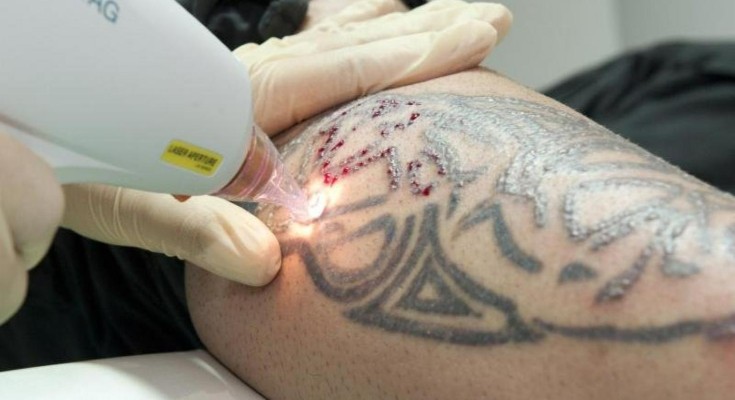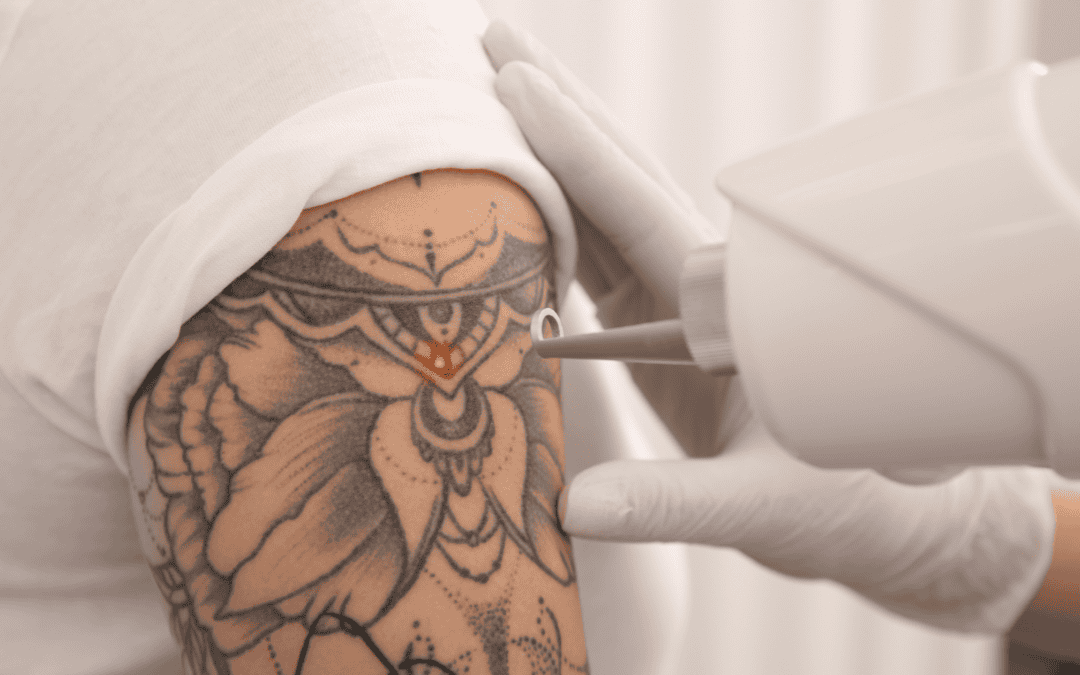Tattoos can be a beautiful form of self-expression, but some people may eventually lose their appeal. Whether due to a change in personal style, a professional requirement, or simply the desire for a clean slate, tattoo removal has become a sought-after solution. Thankfully, tattoo removal has evolved significantly, with modern techniques offering more efficient, safer, and less painful methods than ever before. In this blog, we’ll explore the various removal techniques available today, discuss recent innovations, and provide insights into what you can expect during the process.
1. Laser Tattoo Removal: The Gold Standard

Laser tattoo removal is the most popular and effective method for removing unwanted ink. It uses high-intensity light beams to break down the ink particles in the skin, which are then naturally flushed out by the body’s immune system.
How Laser Tattoo Removal Works:
- Targeting Ink Pigments: The laser selectively targets different ink colors based on their light absorption properties. Dark inks like black and blue are easier to remove, while lighter inks like yellow and white may require more sessions.
- Multiple Sessions: Depending on the size, color, and depth of the tattoo, several sessions may be needed to achieve complete removal or significant fading.
- Advanced Technology: Modern lasers, such as Q-switched and the newer PicoSure lasers, can treat a wider range of tattoo colors and work more efficiently than older methods.
Benefits of Laser Removal:
- Minimal Scarring: Compared to older methods, laser removal leaves minimal scarring and allows for better skin recovery.
- Effective for Most Colors: The latest laser technologies can target a wide spectrum of ink colors.
- Non-Invasive: Laser treatments are non-invasive and require minimal downtime.
2. Dermabrasion: Mechanical Tattoo Removal
Dermabrasion involves physically removing the top layers of the skin to get rid of a tattoo.
The Dermabrasion Process:
- Sanding the Skin: A specialized tool sands away the top layers of the skin, causing the ink to fade over time as the skin heals.
- Pain and Healing: Dermabrasion can be painful and typically requires local anesthesia. The recovery time is longer compared to laser treatments, and there are risks of scarring or skin discoloration.
Why Choose Dermabrasion:
- Alternative to Lasers: Laser treatments can be an option for those who cannot undergo them due to skin sensitivity or other medical conditions.
- Cost-Effective: Dermabrasion is often more affordable than laser treatments but may not be as precise or effective in completely removing the tattoo.
3. Chemical Peels and Creams

Chemical peels and tattoo removal creams are other ways to help tattoos fade, but they don’t work as well and take longer to show results.
Chemical Peels:
- Acidic Solutions: Chemical peels involve applying a solution of acids (like trichloroacetic acid) to the skin, which causes the skin to exfoliate and eventually peel away, taking layers of ink with it.
- Multiple Sessions Required: This method is typically slower, and results can be unpredictable, with some risk of scarring or uneven skin tone.
Tattoo Removal Creams:
- Topical Applications: Tattoo removal creams aim to break down the ink in the skin over time. However, these products are less effective than professional treatments and usually result in only minor fading rather than complete removal.
Why Consider Chemical Peels or Creams:
- Non-Invasive: These methods are non-invasive and do not require any machinery or laser exposure.
- At-Home Options: Some creams that you can apply at home generally require long-term use and offer limited results.
4. Surgical Excision: A Permanent Option
Surgical excision is a more invasive but permanent solution for tattoo removal. This technique involves surgically cutting out the tattooed skin and stitching the remaining skin back together. It is usually small tattoos and can perform it under local anesthesia.
The Excision Process:
- Cutting Out the Tattoo: The tattooed area is surgically removed, and the surrounding skin is pulled together and stitched.
- Scarring: Surgical excision will result in scarring, making it less desirable for large or highly visible tattoos.
When to Consider Surgical Excision:
- Smaller Tattoos: This method is best suited for small tattoos, especially those located in discreet areas of the body.
- Immediate Results: Surgical excision offers immediate tattoo removal, but the resulting scar is a significant trade-off.
5. Innovations in Tattoo Removal: What’s New?
The tattoo removal field continuously evolves with new technologies and techniques that promise faster, more effective, and less painful options. The PicoSure Laser uses ultra-short pulses to shatter ink particles more efficiently than traditional lasers. This reduces the number of sessions needed and minimizes discomfort.
Other Innovations Include:
- Laser-Assisted Tattoo Removal Creams: These creams combine with laser treatments to enhance ink removal by increasing the skin’s permeability to the laser.
- Nanosecond Laser Technology: Nanosecond lasers deliver energy faster, helping to target stubborn ink colors and deep pigments.
Conclusion: Choosing the Right Tattoo Removal Method
Tattoo removal has come a long way, offering several effective options for those looking to erase or fade unwanted ink. When considering tattoo removal, consult a professional to determine the best technique for your skin type, tattoo size, and color. Modern innovations like PicoSure lasers and combined therapies are making the process more efficient than ever.




